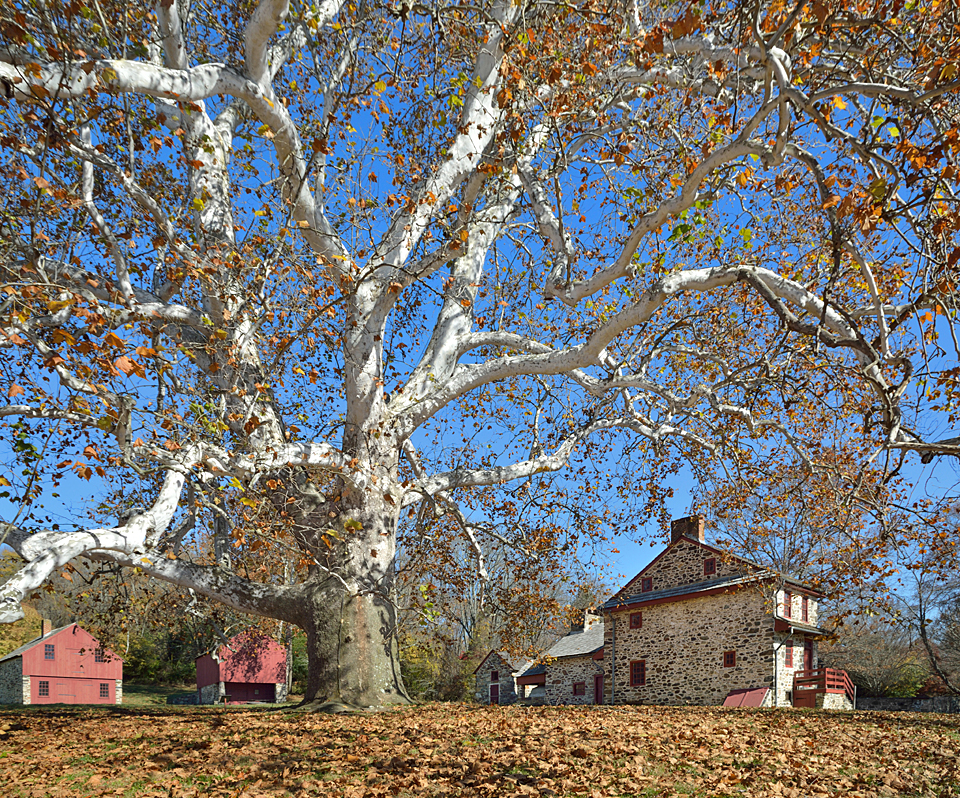
In recent years, historians have tried to dispel the community legend that Gilpin’s House, part of the Brandywine Battlefield State Park in Chadds Ford, Pa. , served as General Lafayette’s headquarters. The Marquis’ friendship nor his ranking did not necessarily give him a special privileges, the theory goes, but more to the point is the lack of real documentation.
Even Lafayette himself did not include any mention of his headquarters in any writings let alone in his 1837 Memoir. The military historian and former park employee, Michael C. Harris, is one of the few to point to Lafayette’s French colleague, the Marquis de Chastellux, whose famous travelogue Travels in America includes a revelatory sentence that Lafayette actually stayed at the Benjamin Ring’s house – not just once, but twice.
The first occasion was in 1777 when the Ring house served as Gen. Washington’s headquarters during the Battle of Brandywine, and the second time was three years after the battle, when Lafayette visited Chadds Ford for an overnight stay with Chastellux and other friends. In Chastellux’s words, Lafayette sought out the “hospitality of a Quaker named Benjamin Ring, at whose house he had lodged with General Washington the night before the battle.”
The community legend about Lafayette’s headquarters at the Gilpin House is said to be based on Lafayette’s famous second visit to America in 1825 when he paid a visit to the owner himself, described as the “aged Gideon” “then on his deathbed.” This written account may have been based on the published writing of Lafayette’s secretary who along with Lafayette’s son, George Washington Lafayette, witnessed the impromptu visit to see the man “under whose roof [Lafayette] had passed the night before the battle.” The fact that it was penned by Lafayette’s secretary added clout to the story, even though it is full of factual errors such as calling Gideon Lafayette’s “ comrade in arms ,” according to Harris.
Harris suspects that the visit was actually a courtesy call to Gilpin, in honor of him being “one of the few still alive nearly half a century after the battle….” Harris says it is more likely that Lafayette stayed with Washington, either in a tent or in Ring’s house.
Perhaps there is little drama in a shared headquarters, nor anything like the story of a wounded Lafayette being carried to Gilpin’s house and treated for his wounds under an American sycamore tree – one that is now the largest and oldest trees in the region. Owned and protected by the Brandywine Battlefield Park, the tree is believed to date to 1650 and has a girth of more than 25 feet.
Despite the fact that the Marquis was wounded miles away at Sandy Hollow, he was said to have refused medical help and famously led the American retreat to Chester. He was later conveyed from there by barge to Philadelphia, resting in a local tavern before being taken by carriage on the long trip to Bethlehem, considered the best place aside from Reading, Pennsylvania, for medical care.
Despite written records that say otherwise, somehow the legend of Lafayette’s tree persists, according to Andrew Outten, the director of the park, who says that the tree was 100 years old when the battle occurred and therefore a landmark at the time.
Unfortunately, the “myth” of the tree takes away from the park’s importance in other ways, such as being a staging ground for a Hessian advance, as well as the site of intense fighting and part of the American retreat.

Visit the Gilpin House regardless !
As a house museum, the Gilpin home tells the story of the local families who witnessed the battle firsthand. Surrounded by a battlefield, Gilpin later has among the highest damage claims in the battlefield region: 500 pounds including many livestock but also 4,000 wooden fence rails and 48 bed sheets.
Less than a month after the battle, the Gilpin’s family suffer through a personal tragedy: they lost a child to illness. Gilpin not only claimed damages, he tried to recoup his losses by turning his house into a tavern in the winter of 1778. For that he was disowned from the Concord meeting (though he also reportedly joined the Pennsylvania militia sometime after the Battle of Brandywine). He was also cited for not obtaining the proper licensing and for taking the Oath of Allegiance —a commitment any patriot was glad to take —but it was against the Quaker doctrine to swear to any oath.
